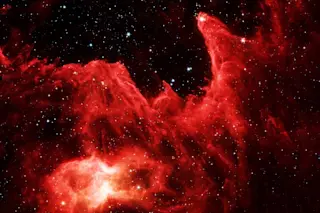Ever since researchers first hypothesized the existence of a mysterious force known as dark energy in the mid-1990s, they've scrambled for proof that the force exists, and that it is indeed gradually causing the universe's expansion to accelerate. Now, Hawaiian astronomers say they have found evidence of dark energy's work by looking at microwave radiation left over from the Big Bang, and how it acts as it traverses strange regions of the universe. The findings, which will be published in an upcoming issue of Astrophysical Journal Letters [subscription required], focus on regions of space called superclusters, which are dense with galaxies, and supervoids, which are unusually empty of galaxies.
"When a microwave enters a supercluster, it gains some gravitational energy and therefore vibrates slightly faster," [lead researcher Istvan] Szapudi said. As it leaves the supercluster, he said, "it should lose exactly the amount of energy. "But if dark energy causes ...













